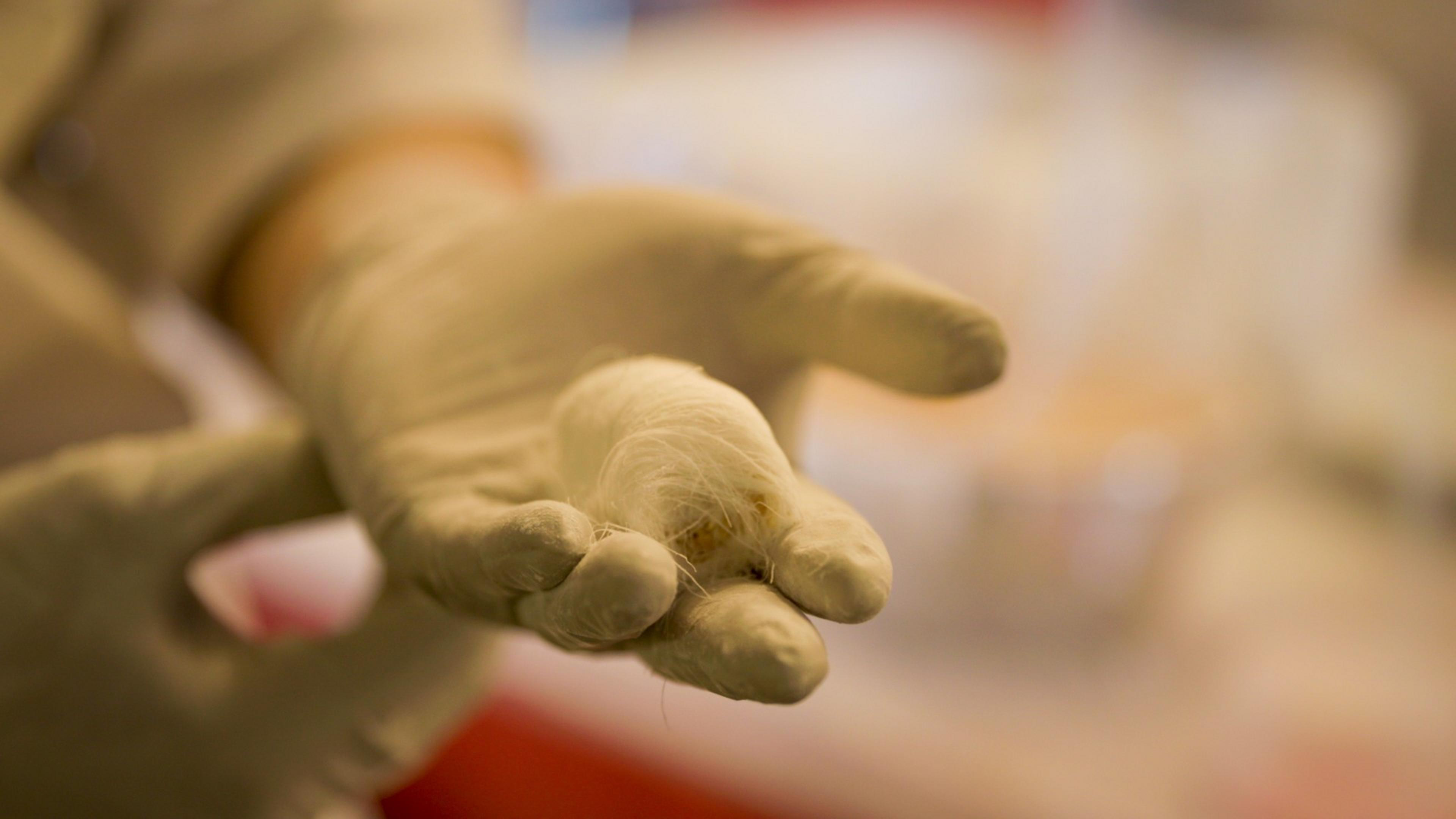With ten minutes of expert twisting, pulling and stretching Derek Tam transforms golden molasses and cornstarch into thousands of thin, silky white strands. Wrap the feathery threads—similar to cotton candy but much less sweet—around a mixture of peanuts, sesame seeds and coconut and you have a 2,000-year-old artisan Chinese dessert: Dragon’s Beard Candy.
Tam, a fifth-generation candy-maker in San Francisco’s Chinatown, says his family is one of just five across the United States, and the last in the Bay Area, who can create the complex confection.
And he’s worried about the art form disappearing entirely.
Tam was forced to close down Dragon Papa Dessert (opens in new tab), his Grant Ave. shop, due to the pandemic. He is making do by selling online and at pop-up events around the Bay Area. But pre-Covid, 80-90% of his sales came from tourists visiting his storefront.
Tam hopes to reopen the shop soon, and plans to teach his 18-month-old daughter the craft, though he knows candy making may not be her chosen career path.
“It’s nearly a lost art because it’s a lot of work,” said Tam.

The process is time-consuming. Tam is only able to churn out about seven batches—or 54 pieces of candy—an hour. The process eludes mechanization; the malt syrup is so sensitive to temperature, said Tam, that each batch is unique. Small changes in humidity impact the number of times the molasses can be stretched and doubled before it becomes too sticky.
Dragon’s Beard Candy is said to date back to the Han Dynasty, when it was served to Chinese royalty. It gets its name from the way the thin, feathery threads stick to the chin when it is eaten.
Tam, who has been making the confection since he was ten years old, says his greatest joy is watching the reactions of others seeing it made for the first time.
“They are usually really surprised,” said Tam. “Their facial expressions make me feel really satisfied.”
Though it makes Tam sad to think about the candy disappearing, he says his goal for now is introducing it to as many people as possible.
“I’m not just trying to teach this candy to my daughter,” said Tam. “If anyone is interested in learning, welcome! I will teach them the traditional art.”